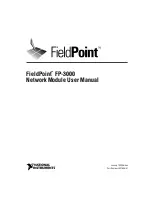
17-8
Catalyst 2928 Switch Software Configuration Guide
OL-23389-01
Chapter 17 Configuring MSTP
Understanding RSTP
illustrates a unidirectional link failure that typically creates a bridging loop. Switch A is the
root switch, and its BPDUs are lost on the link leading to switch B. RSTP and MST BPDUs include the
role and state of the sending port. With this information, switch A can detect that switch B does not react
to the superior BPDUs it sends and that switch B is the designated, not root switch. As a result, switch
A blocks (or keeps blocking) its port, thus preventing the bridging loop.
Figure 17-3
Detecting Unidirectional Link Failure
Interoperability with IEEE 802.1D STP
A switch running MSTP supports a built-in protocol migration mechanism that enables it to interoperate
with legacy IEEE 802.1D switches. If this switch receives a legacy IEEE 802.1D configuration BPDU
(a BPDU with the protocol version set to 0), it sends only IEEE 802.1D BPDUs on that port. An MSTP
switch also can detect that a port is at the boundary of a region when it receives a legacy BPDU, an MSTP
BPDU (Version 3) associated with a different region, or an RSTP BPDU (Version 2).
However, the switch does not automatically revert to the MSTP mode if it no longer receives
IEEE 802.1D BPDUs because it cannot detect whether the legacy switch has been removed from the link
unless the legacy switch is the designated switch. A switch might also continue to assign a boundary role
to a port when the switch to which this switch is connected has joined the region. To restart the protocol
migration process (force the renegotiation with neighboring switches), use the
clear spanning-tree
detected-protocols
privileged EXEC command.
If all the legacy switches on the link are RSTP switches, they can process MSTP BPDUs as if they are
RSTP BPDUs. Therefore, MSTP switches send either a Version 0 configuration and TCN BPDUs or
Version 3 MSTP BPDUs on a boundary port. A boundary port connects to a LAN, the designated switch
of which is either a single spanning-tree switch or a switch with a different MST configuration.
Understanding RSTP
The RSTP takes advantage of point-to-point wiring and provides rapid convergence of the spanning tree.
Reconfiguration of the spanning tree can occur in less than 1 second (in contrast to 50 seconds with the
default settings in the IEEE 802.1D spanning tree).
These sections describe how the RSTP works:
•
Port Roles and the Active Topology, page 17-9
•
•
Synchronization of Port Roles, page 17-11
•
Bridge Protocol Data Unit Format and Processing, page 17-12
For configuration information, see the
“Configuring MSTP Features” section on page 17-13
.
Inferior BPDU,
Desi Learning bit set
Superior
BPDU
Switch
A
Switch
B
92722
Содержание Catalyst 2928
Страница 28: ...Contents xxviii Catalyst 2928 Switch Software Configuration Guide OL 23389 01 ...
Страница 32: ...xxx Catalyst 2928 Switch Software Configuration Guide OL 23389 01 Preface ...
Страница 496: ...26 14 Catalyst 2928 Switch Software Configuration Guide OL 23389 01 Chapter 26 Configuring SPAN Displaying SPAN Status ...
Страница 534: ...29 18 Catalyst 2928 Switch Software Configuration Guide OL 23389 01 Chapter 29 Configuring SNMP Displaying SNMP Status ...
Страница 700: ...Index IN 36 Catalyst 2928 Switch Software Configuration Guide OL 23389 01 ...
















































